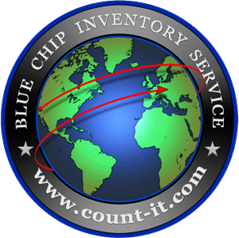
In terms of inventory management, most businesses opt to keep stock levels at a bare minimum. But there are certain upsides to keeping a higher number of items on hand, provided that you do your homework first and do so in a way that complements and supports your business goals. That said, here are some of the basic pros and cons of maintaining excess inventory to help you determine whether doing so makes sense for your organization.
Pros
First, let’s go through some of the benefits of holding on to higher inventory levels.
Speedy Response – When your customers need more of a particular item, you’ll be able to meet those increasing demands without delay or hassle. Speedier response time means a higher degree of customer satisfaction, which leads to repeat business and valuable word-of-mouth marketing.
Fewer Shortages – By maintaining a higher level of inventoried items, you’ll be able to ensure (to a certain degree) that you won’t run out. This can be particularly effective in helping you achieve competitive advantage because you’ll be able to meet (or exceed) changing needs of your customers better than others in your industry.
Faster Restocking – For retail stores, keeping more items on hand means fewer empty shelves. This demonstrates to your clientele that your store is always full and ready to do business, whatever the need may be.
Cons
Of course, as with anything, there are two sides to the story when it comes to maintaining excess inventory levels. Some of the disadvantages include:
• Constricted Cash Flow – Every item you have sitting in your inventory has an equivalent cash value. Lower turnover or higher levels of inventory mean that cash will be tied up for longer periods.
• Greater Risk of Loss – When you choose to keep more of a particular item on stock, you assume the risk of potential loss should that item become obsolete or fail to sell as anticipated. You may be forced to mark these items down or even write them off as a total loss.
• Higher Costs – Keeping inventory on hand does not come without costs, such as storage and even insurance. Logically, the more stock you keep on the shelves, the higher these expenses will be.
So what’s the ideal solution? Well, the goal should be to strike a balance that allows you to prepare for and meet the changing demands of the market and your customer base without tying up money or increasing expenses too much. Using inventory software and enlisting the help of an inventory management professional can also help ensure that you maintain the ideal levels for your business. If you could use some guidance in this area, feel free to give us a call. We’d be happy to help!


This calculator can help you determine the selling price for your products to achieve a desired profit margin. Try It Free >
Our Audit/Verification Service is available globally - from Thousand Oaks, CA to Timbuktu. Learn More >
Don't just take our word for it. Find out what our clients are saying about our services.
See actual testimonials >
From Retail and Gross Margin Inventory reports, to SKU and Price Verification reports, Blue Chip Inventory provides complete inventory service. See samples >






